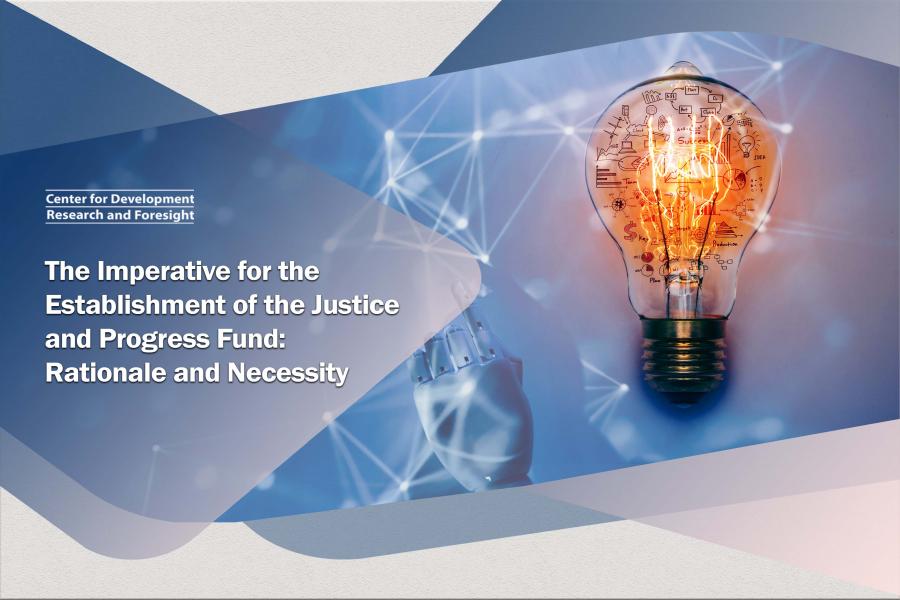
-
بررسی آییننامهها و دستورالعملهای برنامه هفتم پیشرفت
-
بررسی عوامل موثر بر افزایش تصادفات و تلفات جادهای و سوانح رانندگی و دادهکاوی تلفات انسانی
-
سازماندهی و بازآرایی فضایی آموزش عالی کشور
-
به روز رسانی سند ملی آمایش سرزمین
-
انجام مطالعات مناطق آزاد به عنوان نواحی پیشران اقتصادی کشور
-
اصلاح ساختار بودجه و پیاده سازی نظام یکپارچه مدیریت اطلاعات مالی دولت (IFMIS)

The Center for Development Research and Foresight, commissioned by the Country's Program and Budget Organization's Directorate, has embarked on a study titled "Progress and Justice Fund." This research seeks to evaluate the proposed scenarios for establishing the country's growth and development funds. Drawing upon the experiences of the Omid Entrepreneurship Fund's SWOT analysis, this study aims to provide insights into the formation of national growth and development funds. The primary objective of this research is to identify the dimensions, strengths, opportunities, potential bottlenecks, and challenges associated with the Progress and Justice Fund, while also proposing solutions for its implementation.
A study by the Center for Development Research and Foresight and the Management and Planning Organization examined three potential directions for the Omid Entrepreneurship Fund: continuation, replacement with the Progress and Justice Fund, or alternative proposals. While the Progress and Justice Fund is the primary focus of this report, the continuation of the Omid Entrepreneurship Fund remains an option. However, experts have raised concerns about the Omid Entrepreneurship Fund's shortcomings, necessitating careful consideration of the proposed solutions for its continuation. Alternative proposals include eliminating the fund and relying on institutions like Qarz Al-Hosna and banks.
This report outlines initial proposals for defining the Progress and Justice Fund's scope of operations, financial resource allocation, facility distribution, custodian institution, and management structure. Additionally, the report addresses potential challenges associated with the fund, including:
- The complexity arising from the involvement of three credit sources (budget, fund, and bank)
- The effectiveness of monitoring and supervision mechanisms in achieving the fund's objectives
- Depositability, characterized by the preference for capital over deposits and the difficulty of attracting private sector capital
- Rent-seeking and lobbying activities by fund managers, employees, and political figures
- Government budget constraints and resource limitations
- Macroeconomic instability and the influence of external factors
- Non-compliance with maximum interest rate regulations by operating banks and non-bank credit institutions
- Conflicts between national and provincial executive bodies



